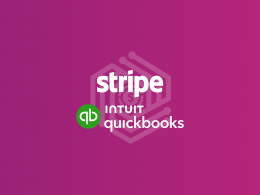If you’re a small business owner, you may have heard of Form 2553. But what exactly is it, and why is it important? In this article, we’ll provide a detailed overview of Form 2553, including who needs to file, how to fill it out, and the advantages of doing so.
It’s important to consult with a qualified tax professional before making any decisions about your business structure. A tax professional can help you understand the advantages and disadvantages of different business structures and help you make the best choice for your business.
What is the form 2553?
Form 2553 is an IRS form that enables eligible small businesses to make an election to be treated as an S corporation for tax purposes. This corporation election, also known as an election by a small business corporation, can provide significant tax savings and liability protections for small businesses.
Before we delve into the details of Form 2553, let’s define what an S corporation is. An S corporation is a special type of corporation that meets certain criteria and has elected to be treated as an S corporation for tax purposes. S corporations are named after subchapter S of the Internal Revenue Code, which outlines the rules and regulations for S corporations.
The primary advantage of S corporation status is that the business’s income, deductions, and credits flow through to the shareholders, who report it on their personal tax returns. This means that the business is not subject to federal income tax at the corporate level, which can result in significant tax savings. Additionally, S corporations provide liability protection for shareholders, which means that they are generally not personally liable for the business’s debts and obligations.
To make an election to be treated as an S corporation, a small business must file Form 2553 with the IRS. This corp election must be made within a specific timeframe – generally, by the 16th day of the third month of the tax year in which the election is to take effect.
Filing Form 2553 is a critical step in the corporation election process, and it’s important to ensure that the form is filled out correctly and submitted on time. If the election is not made on time, the small business will have to wait until the next tax year to make the election, which can result in missed tax savings.
Small businesses can benefit from working with an accountant or tax professional when making a corporation election or filling out Form 2553. An accountant can provide guidance on the eligibility criteria for S corporation status, help fill out the form correctly, and ensure that the election is made on time.
Learn how accounting software can help you with the bookkeeping process – check Synder Sync.
In the next section, we’ll take a closer look at who is eligible to make an election to be treated as an S corporation and how to fill out Form 2553.
Who needs to file form 2553?
To be eligible to file Form 2553, a business must meet the following criteria:
- Be a domestic corporation
- Have no more than 100 shareholders
- Have only allowable shareholders, which include individuals, estates, and certain trusts and exempt organizations
- Have only one class of stock
- Not be an ineligible corporation, such as certain financial institutions or insurance companies
If your business meets these criteria, you may be able to benefit from filing Form 2553.
The eligibility criteria for Form 2553 are designed to ensure that only small businesses can take advantage of the tax benefits and liability protections of S corporation status. This means that larger corporations and certain types of businesses, such as banks and insurance companies, are not eligible to file Form 2553.
How to fill out form 2553
Filling out Form 2553 can seem intimidating, but it’s actually a straightforward process. The form has six sections, and you’ll need to provide basic information about your business and its shareholders. You can find detailed instructions for each section on the IRS website.
The first section of Form 2553 asks for basic information about your business, such as its name, address, and taxpayer identification number. You’ll also need to indicate the tax year for which you’re making the election.
The second section asks for information about your business’s shareholders. You’ll need to list the names and addresses of all shareholders and the number of shares held by each shareholder.
The third section asks you to indicate whether your business meets the eligibility criteria for S corporation status, as outlined above.
The fourth section asks you to indicate the effective date of the election. This is the date on which your business will begin to be treated as an S corporation for tax purposes.
The fifth section asks you to provide the signatures of all shareholders. This is an important step, as the election will not be valid unless all shareholders sign the form.
The sixth section is optional and only required if your business requests relief from certain penalties for late or incomplete filings.
When filling out Form 2553, it’s important to avoid common mistakes such as missing deadlines, failing to sign the form, or submitting incomplete information. These mistakes can result in delays or penalties, so be sure to take your time and double-check your work.
Business advantages of filing form 2553
There are several advantages to filing Form 2553:
Tax benefits
As mentioned earlier, S corporations are not subject to federal income tax. Instead, their income, deductions, and credits flow through to shareholders, who report it on their personal tax returns. This means that the business can avoid double taxation, which can result in significant tax savings.
Liability protection
S corporation status can provide liability protection for shareholders, which means that they are generally not personally liable for the business’s debts and obligations. This can be especially important for small businesses that may not have the resources to pay for legal disputes or other liabilities.
Enhanced credibility
S corporation status can enhance a business’s credibility with customers, vendors, and lenders. This is because S corporations are subject to more regulatory requirements than other types of businesses, which can provide additional assurance that the business is well-run and financially stable.
Conclusion
In conclusion, Form 2553 is an important tax form for small businesses that want to elect S corporation status. Businesses can take advantage of several tax benefits and liability protections by filing this form. If you’re considering filing Form 2553, be sure to carefully review the eligibility criteria, fill out the form correctly, and file on time. With the right preparation, you can enjoy the advantages of S corporation status for your business.
It’s important to note that while S corporation status can provide significant tax benefits and liability protections, it may not be the best choice for every business. Depending on your specific circumstances, you may want to consider other types of business structures, such as limited liability companies (LLCs) or partnerships.
Overall, Form 2553 can be a valuable tool for small businesses that want to take advantage of the benefits of S corporation status. By understanding the eligibility criteria, filling out the form correctly, and filing on time, you can position your business for success and growth.







.png)
